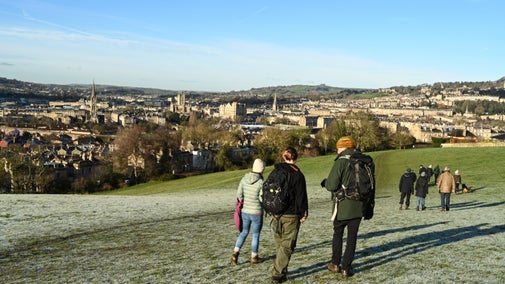Journey of Discovery trail
Bath & Bristol
Please check with Visitor Reception for any recent route changes on arrival. Enjoy a ramble through the past on this family-friendly trail through Dyrham's parkland. This is a landscape that's steeped in history and each waypoint of this walk reveals a different clue from days gone by. For younger walkers, there are carved wooden animals to spot along the way, before the walk finishes at Old Lodge.
Near to
Dyrham ParkStart point
Visitor reception, Dyrham Park SN14 8HY. Grid ref: ST749758Trail information
More near here
The Prospect Walk at Dyrham Park
The Prospect Walk at Dyrham Park guides you to the best points around the parkland to enjoy views across the Cotswold hills and the Bristol Channel.

The terraces walk at Dyrham Park
Stroll through open parkland and explore tranquil woodland on the circular terraces walk at Dyrham Park.

Get in touch
Our partners

We’ve partnered with Cotswold Outdoor to help everyone make the most of their time outdoors in the places we care for.
You might also be interested in
Things to see and do in the house at Dyrham Park
The main phases of conservation and decorative work in the house at Dyrham Park are now complete and you can explore beautifully presented rooms, delve into the house's history and discover what it was like to live in the 17th century.

Walking
Explore some of the finest landscapes in our care on coastal paths, accessible trails, woodland walks and everything in between. Find the best places to walk near you.

Assistance dogs only at Dyrham Park
Assistance dogs are welcome throughout Dyrham Park but we do not allow other dogs on site.

Eating and shopping at Dyrham Park
After exploring the house and garden, refuel with a tasty treat from the tea-room, café at Old Lodge or tea garden kiosk. Whether sweet or savoury, there's bound to be something to tempt you. Afterwards, take home a gift from the shop, where there's a wide range of products, from locally made chutneys to fun family books.

Cotswold Outdoor: our exclusive walking partner
Learn about the National Trust’s ongoing partnership with Cotswold Outdoor. Find out how they help us care for precious places and the exclusive discount available for National Trust supporters.

Staying safe at National Trust places
The special places in National Trust care sometimes come with a few risks for visitors, be it coastline or countryside. Find out how to keep safe throughout your visits.

Walking in Bath and Bristol
From peaceful strolls through woodland at Leigh Woods to rambles through a historic estate at Tyntesfield, these are some of the best walks in Bath and Bristol.


